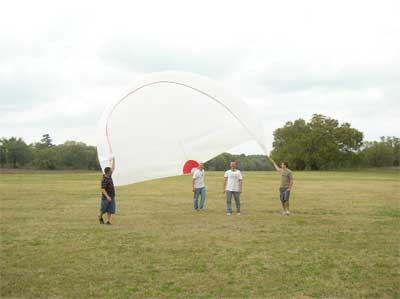Fit testing was performed in conjunction with the assembly. One of the main areas of interference was the insertion of the shafts into the bearings. Each shaft had to be hand-polished to fit in the proper bearings. As the system was being assembled, the team had to adjust the size of the spacers to allow for the proper amount of clearance. Some thicknesses of the plates were larger than the expected tolerance, therefore resizing of plates was also done to facilitate the assembly.
No Load Testing
No load testing was performed in the assembly area with no lines attached to the spools. The motors were individually run to check the performance of each function. The rotational velocities of the spools were checked during each function test, allowing the team to compare the actual line speeds to the theoretical line speeds. When running, the vibration of the system loosens setscrews. The system had to be partially disassembled and Loctite™ was used to secure the setscrews
Loaded Testing
The final stage of testing was the use of a traction kite to test the
system under load. The system was securely attached to the back of a pickup
truck. The leading edge of the kite was then lifted by hand to allow the
kite to fill with air. The truck was then slowly driven to create an artificial
wind that lifted the kite high in the air. Once fully deployed, the control
system was tested for performance.

Team Setting Out the Traction Kite